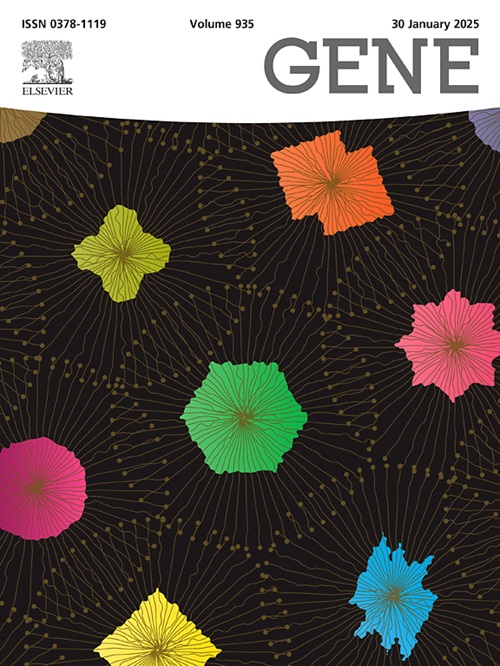丹莪术胶囊通过抑制NLRP3炎性体和MAPK/NF-κB信号通路减轻急性肺损伤
IF 2.6
3区 生物学
Q2 GENETICS & HEREDITY
引用次数: 0
摘要
目的 丹热清胶囊(TRQC)是一种传统中药制剂,历来被用于治疗急性肺损伤(ALI)和COVID-19诱导的肺部疾病。本研究旨在探讨TRQC在脂多糖(LPS)诱导的ALI模型中的作用及其内在机制。根据TRQC中的活性化合物和网络药理学分析,确定了潜在的靶向信号。研究了 TRQC 对 LPS 刺激的 BMDM 信号传导的影响。此外,还研究了小鼠的排便状况以及 HBE 细胞和 T84 结肠上皮细胞分泌 Cl- 的机制。利用基于活性化合物的系统药理学方法,发现 TRQC 可调节炎症相关通路,包括 NF-κB、NOD 样信号转导和 MAPK 信号转导。体外实验表明,TRQC 能有效抑制 LPS 诱导的巨噬细胞活化以及 LPS 和尼日尔霉素诱导的 NLRP3 炎性体的组装。这些作用归因于抑制了 NF-κB 和 NOD 样信号通路。此外,TRQC 还能阻断 MAPK 信号转导,从而减轻 LPS 和尼日尔霉素对结肠上皮细胞中 Ca2+ 依赖性 Cl- 外流的抑制作用。我们的研究表明,TRQC 可有效抑制 NLRP3 炎性体和 MAPK/NF-κB 信号通路,从而显著缓解 ALI。这些研究结果表明,TRQC 可作为治疗肺部炎症疾病的候选药物,为治疗 ALI 等疾病提供一种新方法,并有可能扩展到其他炎症疾病。本文章由计算机程序翻译,如有差异,请以英文原文为准。
The Tan-Re-Qing Capsule mitigates acute lung injury by suppressing the NLRP3 inflammasome and MAPK/NF-κB signaling pathways
Objective
The Tan-Re-Qing Capsule (TRQC), a traditional Chinese medicine (TCM) preparation, has been historically utilized in treating acute lung injury (ALI) and COVID-19-induced pulmonary diseases. This study aimed to explore the effect and underlying mechanisms of TRQC in lipopolysaccharide (LPS)-induced ALI models.
Methods
The changes of acute lung injury and inflammatory response were observed after TRQC treatment of the LPS-induced ALI mouse model. Based on active compounds in TRQC and network pharmacology analysis, potential targeting signals were identified. The effects of TRQC on signaling in LPS-stimulated BMDMs were investigated. Additionally, the defecatory status of mice and the mechanism of Cl− secretion in HBE cells and T84 colonic epithelial cells were examined.
Results
TRQC exhibited a notable amelioration of inflammatory injuries in ALI mice. Utilizing a systems-pharmacology approach based on active chemical compounds, TRQC was found to regulate inflammation-related pathways, including NF-κB, NOD-like signaling, and MAPK signaling. In vitro experiments demonstrated that TRQC effectively suppressed LPS-induced activation of macrophages and the assembly of the NLRP3 inflammasome induced by LPS and Nigericin. These effects were attributed to the suppression of NF-κB and NOD-like signaling pathways. Furthermore, TRQC blocked MAPK signaling, thereby mitigating the inhibitory effects of LPS and Nigericin on Ca2+-dependent Cl− efflux across colonic epithelial cells. This mechanism generated a cathartic effect, potentially aiding in the removal of harmful substances and pathogenic bacteria.
Conclusion
Our study demonstrates that TRQC significantly mitigates ALI by effectively suppressing the NLRP3 inflammasome and MAPK/NF-κB signaling pathways. These findings suggest that TRQC could serve as a promising therapeutic candidate for inflammatory lung diseases, offering a novel approach to managing conditions like ALI and potentially extending to other inflammatory diseases.
求助全文
通过发布文献求助,成功后即可免费获取论文全文。
去求助
来源期刊

Gene
生物-遗传学
CiteScore
6.10
自引率
2.90%
发文量
718
审稿时长
42 days
期刊介绍:
Gene publishes papers that focus on the regulation, expression, function and evolution of genes in all biological contexts, including all prokaryotic and eukaryotic organisms, as well as viruses.
 求助内容:
求助内容: 应助结果提醒方式:
应助结果提醒方式:


